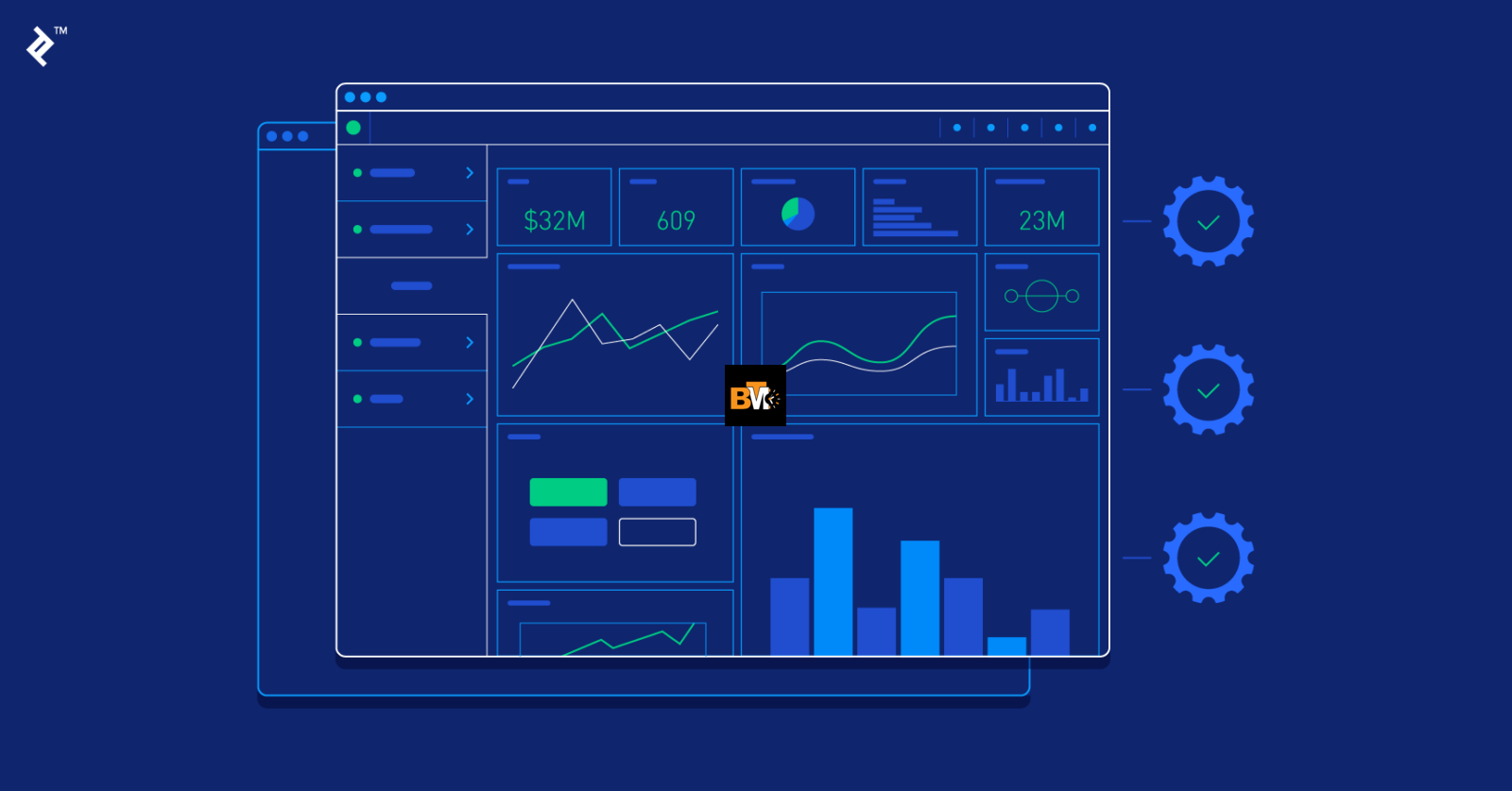Randomly located data within your platforms can hinder efficiency and decision-making. Many businesses use customer relationship management systems (CRMs), enterprise resource planning (ERPs), and marketing tools, but accessing and analyzing this data becomes highly complex if you’re missing an integration.
Custom dashboards can handle this aspect by integrating all integral data into one comprehensive hub, allowing smoother workflows, faster insights, and better decisions. Centralization is a great approach that helps employees eliminate time switching across platforms, leading to inefficiencies, missed opportunities, and setbacks.
Integrating a custom dashboard optimizes data access and delivers real-time insights. Let’s outline seven best practices to ensure effective dashboard integration.
1. Understand the Data Flow: Map Out Existing Systems
Before starting a custom dashboard development project, you should get a fully-fledged view of your current data ecosystem. To do so, we suggest mapping out how data flows within your existing systems. Study the processes in your CRM, ERP, marketing platforms, financial tools, or others, and identify where integration challenges may exist.
Actionable Tip
Besides, carry out an in-depth audit of all current data sources. The great way to do this is to create a data flow map that demonstrates how information transitions across diverse systems, which software is responsible for which data, and where dependencies exist. Visualize your entire data outlook, and you’ll be all set to design a dashboard that integrates your systems flawlessly.
What’s the benefit?
This approach helps you avoid common issues in dashboard software integration, such as redundant data, integration delays, or mismatched data points. It also guarantees that the dashboard provides comprehensive access to relevant details, consequently providing a seamless integration flow.
Ensure Compatibility with APIs and Data Sources
Compatibility between your custom dashboard and existing platforms is critical for seamless integration. If your dashboard can’t smoothly interconnect with your current solutions, data flow may be disrupted, resulting in inefficiencies and errors.
Actionable Tip
Employ RESTful APIs and make sure your custom dashboard supports a range of data formats like JSON, XML, and CSV. RESTful APIs are widely adopted standards that let your applications interact through the web, guaranteeing that your dashboard can extract data from diverse platforms and show it in an absolute, comprehensive view.
What’s the benefit?
Providing compatibility guarantees that data will flow smoothly across systems. It reduces the risk of data loss, inconsistency, or faults that may, in contrast, decrease the quality of your insights and decision-making flows.
3. Focus on Real-Time Data Synchronization
Many legacy systems perform based on static data reports, which are updated occasionally. Still, real-time data synchronization is integral for businesses that must take action quickly and make smart decisions using the latest information.
Actionable Tip
Incorporate real-time data fetching and syncing capabilities using instruments like Webhooks or WebSockets. Such technologies allow systems to automatically update your dashboard whenever new data is available, so your team constantly interacts with the most current information.
What’s the benefit?
Real-time synchronization significantly boosts your company’s capacity to react to modifications and opportunities. Up-to-the-minute details guarantee that decision-making is powered by the most precise, clean, and timely information, which elevates agility and responsiveness. This is especially relevant for Business Intelligence (BI) dashboards, which are a data visualization tool that consolidates and displays key performance indicators (KPIs), metrics, and data points from various sources in a centralized, easy-to-read format. Real-time access provides many benefits of BI dashboards, such as providing up-to-the-minute data and enabling businesses to make timely and informed decisions in a rapidly changing environment.
4. Prioritize Security and Data Privacy
As more platforms are integrated, the risk of data breaches increases. Ensuring robust security should be a top priority when integrating custom dashboards, especially when handling sensitive data such as customer information or financial records.
Actionable Tip
Incorporate SSL/TLS encryption for data transmission, implement role-based access control (RBAC) to restrict sensitive data access, and conduct regular security audits. Moreover, ensure compliance with respective data privacy regulations such as GDPR or HIPAA, depending on the domain your business is in.
What’s the benefit?
By securing your data at every step – whether it’s in transmission, at rest, or in employment – you establish trust with your stakeholders and guarantee that your integration complies with all regulatory requirements. It also mitigates the risk of data breaches that can ruin or damage your reputation and consequently bring in significant financial penalties.
5. Optimize for Scalability
Your business is likely to progress and expand, and with growth comes the elevation of data and user demand. As a result, your tailored dashboard integration must be designed with scalability in mind so it can cope with future extensions without needing costly overhauls.
Actionable Tip
Use modular integration strategies and opt for cloud-based infrastructure. These approaches allow you to scale your dashboard data integration seamlessly as your business elaborates, implementing new sources or users without sacrificing performance.
What’s the benefit?
A scalable product guarantees that your dashboard remains functional and practical even as your data volume and business complexity grow. Scalability future-proofs your investment, eliminating upgrades and reconfigurations down the line, the cost of which goes through the ceiling.
6. Prioritize User Experience (UX)
A dashboard should not only be decisive in terms of data performance but also intuitive and user-friendly. Considering all of these factors, the core aim of the dashboard is to make data accessible and useful for end-users.
Actionable Tip
Create a concise, easy-to-use interface that liquidates the complexity of handling several datasets. Offer bespoke views for various user roles, making sure that each department or party gets access to the data most relevant to their performance without being overwhelmed by extraneous details.
What’s the benefit?
A well-designed user interface promotes higher adoption rates within your organization. When users experience seamless navigation and access to the dashboard, they’re more likely to adopt it within their daily tasks, thus increasing productivity across departments and ensuring enhanced decision-making.
7. Test and Iterate: Continuous Monitoring and Optimization
The integration process doesn’t finish once the dashboard is launched and is performing. You should implement constant monitoring and testing protocols to prolong the performance and functionality of your software.
Actionable Tip
Set up automated tests and tracking systems to verify that data connections are functioning correctly. Regularly gather user feedback to determine pain points or sectors that require improvement. Continuous iteration helps you boost your dashboard integration and guarantees it remains a high-performing solution as a business grows.
What’s the benefit?
You make your dashboard adaptable to your growing and dynamic business necessities by continuously optimizing your dashboard. Constant monitoring helps eliminate performance challenges before escalating escalation, keeping your data integrations seamless and effective over time.
Conclusion: Unlock the Full Potential of Your Data
Seamless dashboard integration is a necessity for businesses that want to employ data for better decision-making. By following these seven best practices, you can make sure a smooth integration process that optimizes data access, elevates real-time decision-making, boosts security, scales with your business, and delivers an exceptional user experience.
If you’re ready to profit from the full potential of your data, now is the time to invest in custom dashboard integration. Elevate your business with a solution that centralizes your data, improves efficiency, and drives the most beneficial decisions.




Leave a Reply